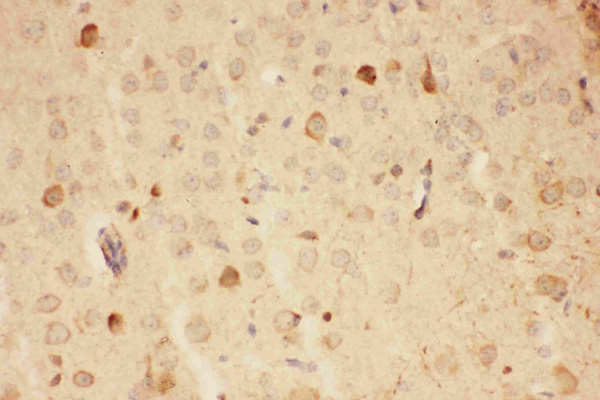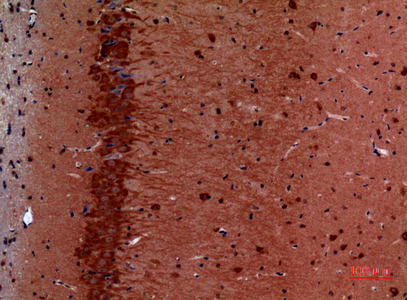Rabbit Hsp90 Polyclonal Antibody | anti-HSP90AA1 antibody
Anti-Hsp90 Antibody
Application Data
(Anti-Hsp90-alpha-Picoband antibody, AAA11604-6.jpgAll lanes: Anti-HSP90(AAA11604) at 0.5ug/mlLane 1: Rat Liver Tissue Lysate at 40ugLane 2: Hela Whole Cell Lysate at 40ugLane 3: MCF-7 Whole Cell Lysate at 40ugLane 4: Raji Whole Cell Lysate at 40ugPredicted bind size: 83KDObserved bind size: 83KD)
IHC (Immunohistochemistry)
(Anti-Hsp90-alpha-Picoband antibody, AAA11604-3.JPGIHC(P): Rat Brain Tissue)
IHC (Immunohistochemistry)
(Anti-Hsp90-alpha-Picoband antibody, AAA11604-2.JPGIHC(P): Mouse Brain Tissue)
Background: HSP90 (heat shock protein 90) is a chaperone protein that assists other proteins to fold properly, stabilizes proteins against heat stress, and aids in protein degradation. HSP90 inhibitorsare investigated as anti-cancer drugs. Heat shock proteins, as a class, are among the most highly expressedcellular proteins across all species. It is mapped to 14q32.31. Hsp90 acts as a capacitor for morphologic evolution through epigenetic and genetic mechanisms. HSP90 is a molecular chaperone that plays a key role in the conformational maturation of oncogenic signaling proteins, including HER2/ERBB2, AKT, RAF1, BCR-ABL, and mutated p53. Although HSP90 is highly expressed in most cells, HSP90 inhibitors selectively kill cancer cells compared to normal cells, and theHSP90 inhibitor 17-allylaminogeldanamycin (17-AAG) exhibited antitumor activity in preclinical models.
























